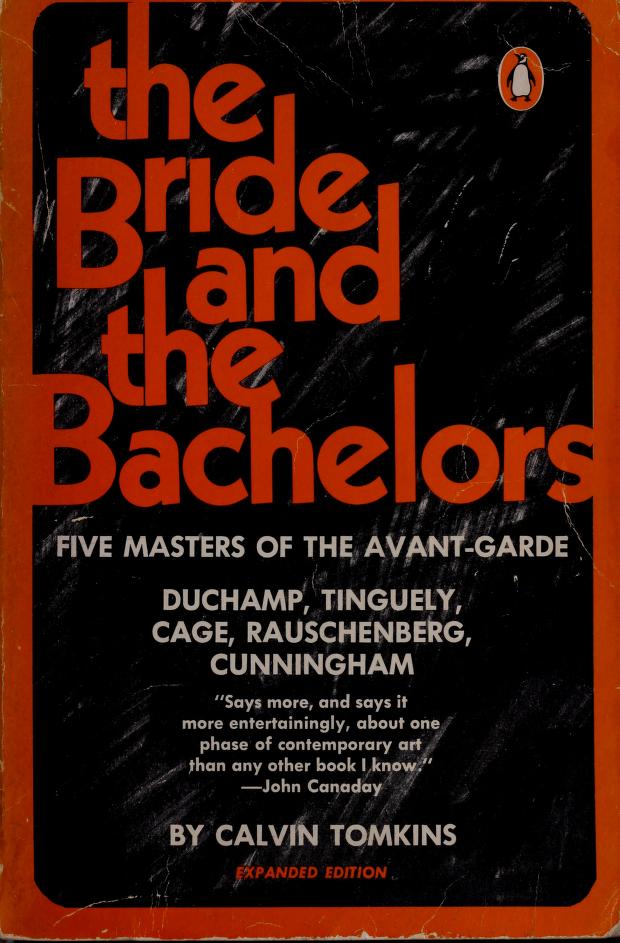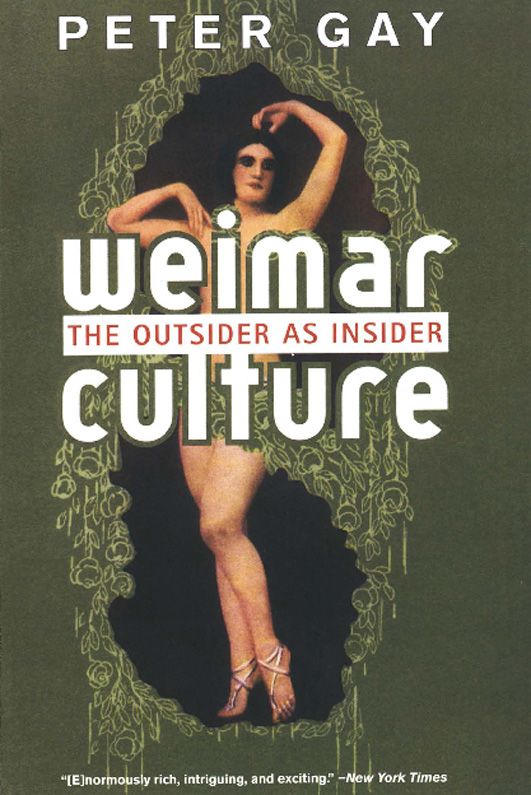Calvin Tomkins: The Bride and the Bachelors: Five Masters of the Avant-Garde (1965/1976)
Filed under book | Tags: · art, art criticism, art history, dance, machine, music, painting

A classic work of art criticism. The chapters on Marcel Duchamp, John Cage, Jean Tinguely, Robert Rauschenberg, and Merce Cunningham by an author also known for his work for Radio Free Europe, Newsweek, and The New Yorker.
First published by Viking Press, 1965
Viking Compass Edition with a new Introduction and expanded text published 1968
This edition by Penguin, 1976
ISBN 0140043136
306 pages
PDF (36 MB, no OCR)
Comment (1)Alondra Nelson (ed.): Afrofuturism: A Special Issue of Social Text (2002)
Filed under journal | Tags: · africa, afrofuturism, art, diaspora, internet, literature, music, poetry, posthuman, race, science fiction, subjectivity, technology

The issue guest edited and introduced by Alondra Nelson explores futurist themes, sci-fi imagery, and technological innovation in African diasporic culture. Contributors approach this under-explored theme from a variety of angles: as a novel frame of reference for visual culture; as fiction of the near-future; as poetry; as new forms of black subjectivity; as new narratives about the digital revolution; and as the imagining of future directions in African diasporic studies. Alexander G. Weheliye rethinks the category of the posthuman. Ron Eglash historicizes the nerd, while Anna Everett shows how the African diaspora prefigures the Internet. Kali Tal explores the utopian vision of black militant near-future fiction, whose heir apparent, Nalo Hopkinson, is interviewed by Alondra Nelson. The esthetic possibilities of this project are evident in poetry by Tracie Morris, and the images of Tana Hargest and Fatimah Tuggar.
Social Text 71, Summer 2002
146 pages
PDF (15 MB)
Comment (0)Peter Gay: Weimar Culture: The Outsider As Insider (1968–) [EN, CR]
Filed under book | Tags: · 1910s, 1920s, 1930s, architecture, art, bauhaus, cinema, expressionism, film, germany, literature, modernism, music, nazism, philosophy, politics, psychoanalysis, theatre, weimar republic

First published in 1968, Weimar Culture is one of the masterworks of Peter Gay’s career. A study of German culture between the two wars, the book brilliantly traces the rise of the artistic, literary, and musical culture that bloomed ever so briefly in the 1920s amid the chaos of Germany’s tenuous post-World War I democracy, and crashed violently in the wake of Hitler’s rise to power. Despite the ephemeral nature of the Weimar democracy, the influence of its culture was profound and far-reaching, ushering in a modern sensibility in the arts that dominated Western culture for most of the twentieth century.
First published by Harper & Row, New York, 1968.
Publisher W. W. Norton, 2001
ISBN 0393322394, 9780393322392
205 pages
via chef
Review (Walter Laquer, The New York Times Books, 1968)
Review (Elizabeth Wiskemann, The Spectator, 1969)
Review (Sterling Fishman, History of Education Quarterly, 1970)
Weimar Culture: The Outsider As Insider (English, 1968/2001, EPUB)
Weimarksa kultura: Isključenik kao uključenik (Croatian, trans. Danja Šilović-Karić, 1999, added on 2014-8-3)

